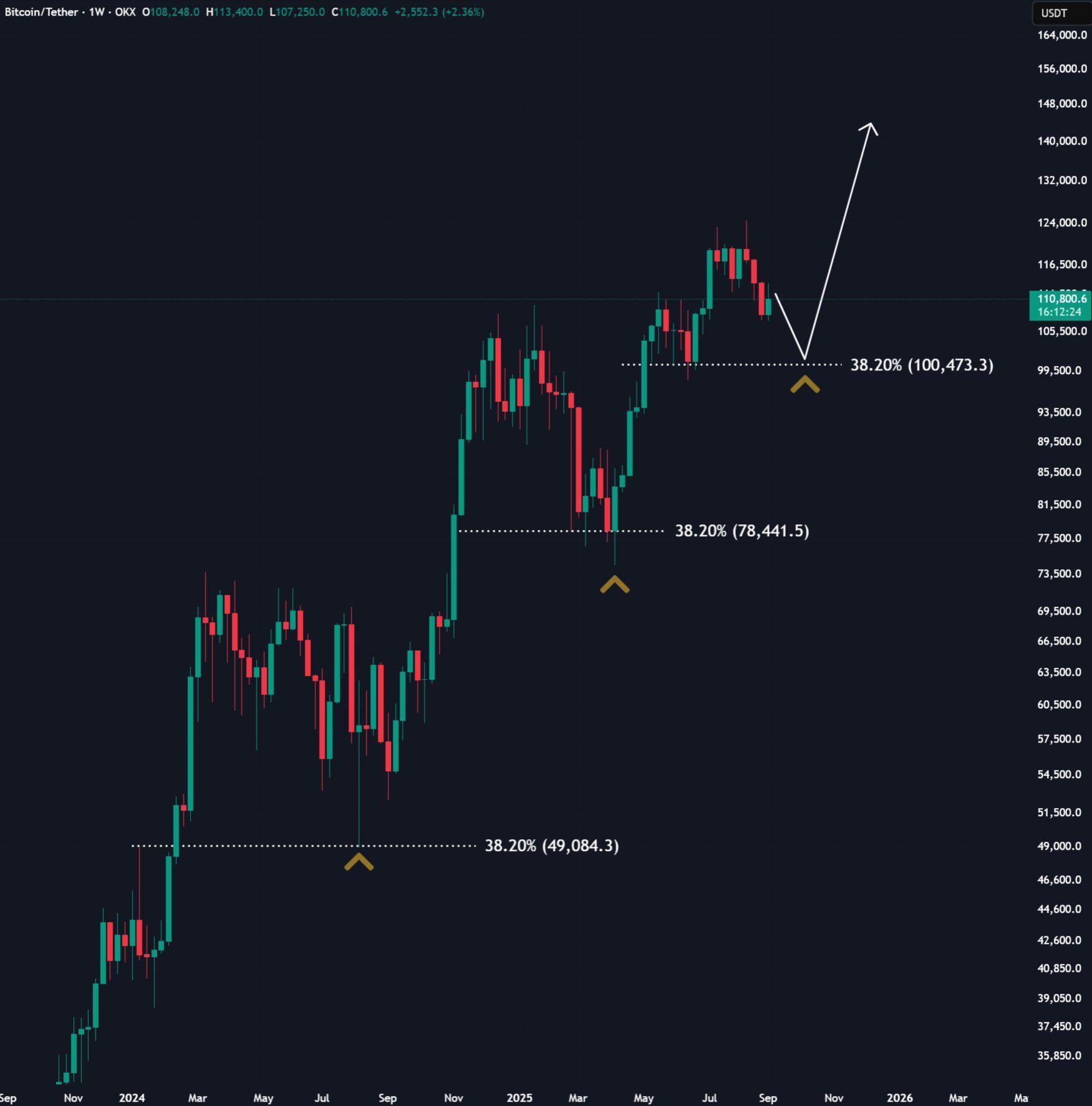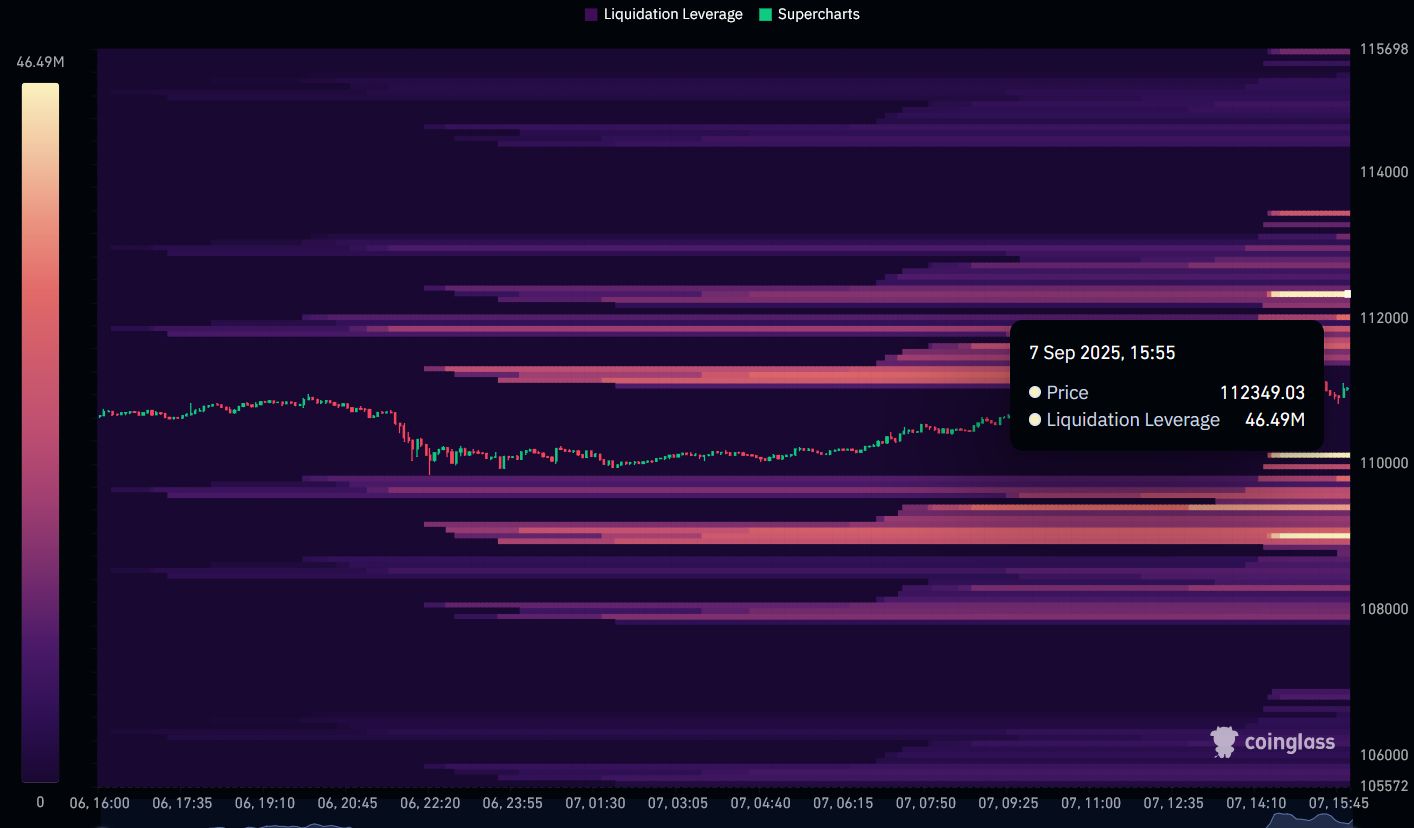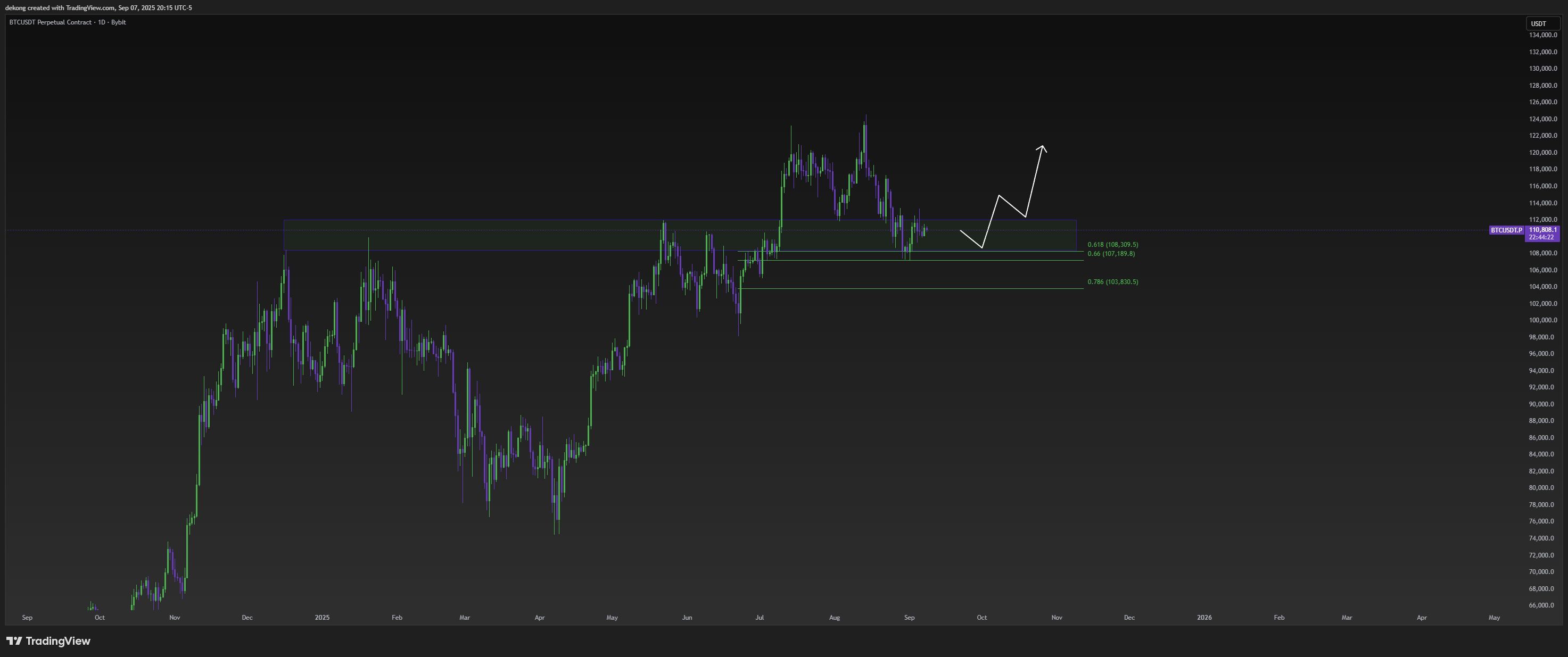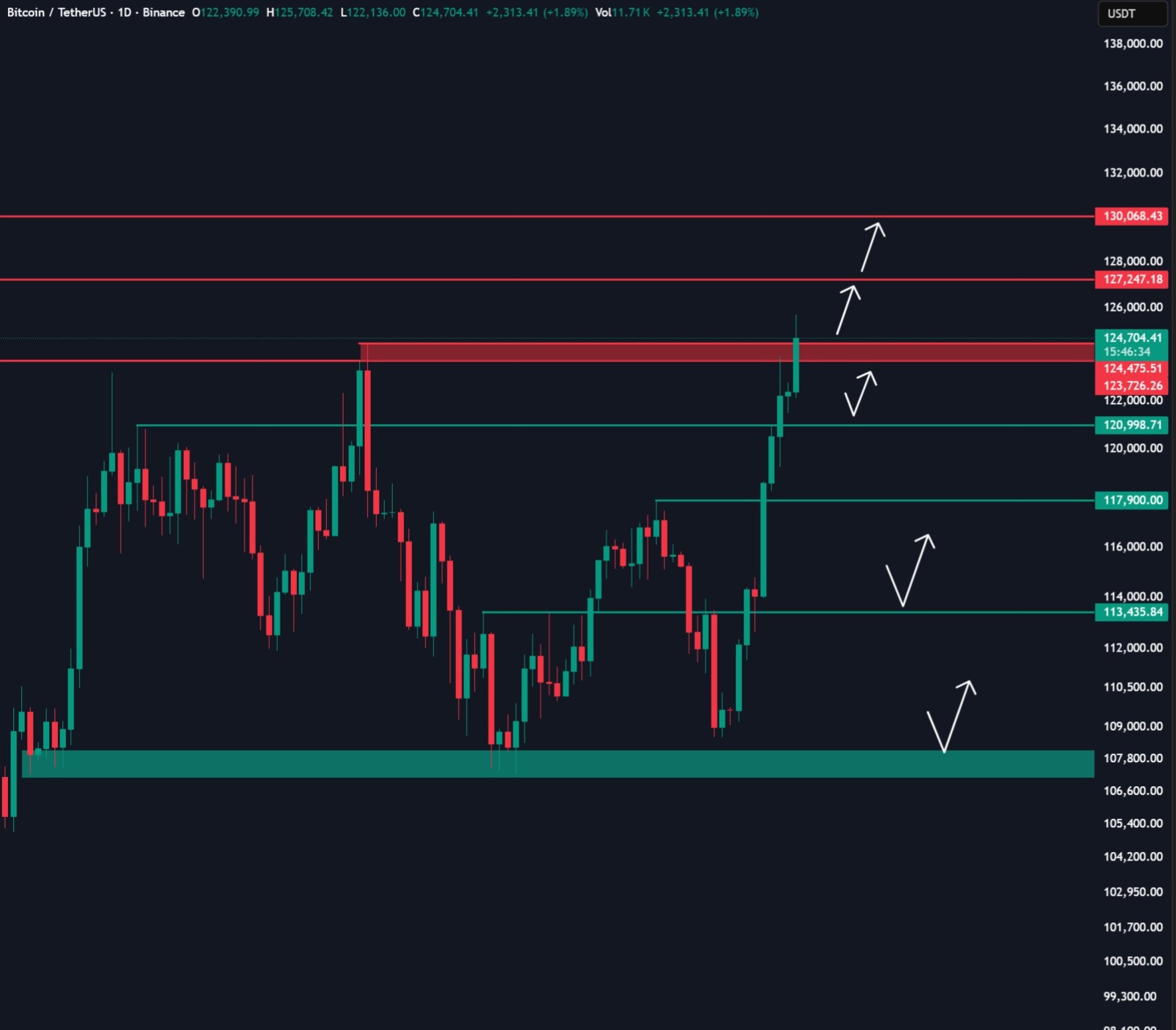🚀 Latest Bitcoin Price Predictions: Bull Run to Continue in 2025!
With Bitcoin currently trading around $113,762, experts are overwhelmingly bullish on BTC's future prospects. Here's what the latest analysis reveals about Bitcoin's price trajectory:
💰 2025 Price Targets:
-
Conservative estimates: $120,000 - $135,000
Bullish predictions: $150,000 - $175,000
Ultra-bullish: Up to $230,000 (Digital Coin Price)
Cathie Wood (Ark Invest): Path to $1 million within 5 years
📈 Key Price Predictions by Year:
-
2025: Average $125,027 (range: $84,643 - $181,064)
2026: Average $111,187 (range: $95,241 - $150,000)
2030: Average $266,129 (range: $198,574 - $500,000)
Long-term: Some analysts predict $900K+ by 2030
🎯 What's Driving the Bullish Outlook:
-
Post-halving momentum (April 2024 halving reducing supply)
Massive institutional adoption via Bitcoin ETFs
Growing acceptance as digital gold and inflation hedge
Potential Federal Reserve rate cuts boosting risk assets
Strong political support and clearer regulations
📊 Technical Analysis Insights:
-
200-day moving average trending upward since January 2025
Current RSI in neutral zone (30-70), indicating room for growth
Fear & Greed Index at 50 (neutral), historically preceding rebounds
14/30 green days in the last month showing resilience
⚡ Key Catalysts to Watch:
-
Bitcoin ETF approvals at major wirehouses (Q3-Q4 2025)
Institutional "basis trade" adoption accelerating
Potential shift from retail to institutional investor flows
Macroeconomic stability supporting risk-on sentiment
🔮 Expert Highlights:
-
Bernstein: Revised target from $150K to $200K by end-2025
PlanB: Stock-to-flow model suggests $1M possible by 2025
Bloomberg: Conservative $100K target based on historical cycles
Chamath Palihapitiya: $500K by October 2025
⚠️ Risk Factors:
-
High volatility remains (1.78% daily price swings)
Regulatory uncertainties in various jurisdictions
Competition from other cryptocurrencies
Macroeconomic headwinds and geopolitical tensions
Bottom Line: Despite short-term volatility, the consensus among analysts points to continued Bitcoin appreciation driven by institutional adoption, post-halving dynamics, and its growing role as a digital store of value. The next 12-18 months could be pivotal for BTC reaching new all-time highs.
Current market conditions suggest this could be an opportune time for long-term investors, though as always, conduct your own research and invest responsibly.
Read more detailed analysis and expert insights: 👇 https://blog.jucoin.com/what-are-the-latest-bitcoin-price-predictions/?utm_source=blog
#Bitcoin #BTC


JU Blog
2025-08-22 11:03
Bitcoin Price Predictions 2025: Navigating the Bull Market
Sorumluluk Reddi:Üçüncü taraf içeriği içerir. Finansal tavsiye değildir.
Hüküm ve Koşullar'a bakın.
↗️ Challenge your prediction skills every week! Predict the closing price of #BTC and comment your prediction
🎁 Top 10 people who predict closest to the closing price at 11:00 on 26/08/2025 (UTC+7) will share 50 USDT!
📢 How to participate:
1️⃣ Join https://t.me/Jucoin_Vietnam, post in Telegram group with syntax: :#BTCPriceGuess + price. Example: #BTCPriceGuess $116,980.01"
2️⃣ Make sure to submit your prediction before 11:00 on 25/08/2025 (UTC+7)
3️⃣ Each person can only predict once, no editing allowed. If many people choose the same price, the reward will go to the person who submitted first.
🛫 Join us every week and seize the chance to win!
#JuCoin #JuCoinVietnam #Crypto #BTC #Blockchain #Web3 #JuCoinTrading #CryptoCommunity


Lee | Ju.Com
2025-08-20 12:05
🎰 JuCoin Fortune Wednesday Event – Predict the price, get cash rewards!💰
Sorumluluk Reddi:Üçüncü taraf içeriği içerir. Finansal tavsiye değildir.
Hüküm ve Koşullar'a bakın.
Soit 111 milliards $ retirés du marché, accentuant la pénurie d’offre. La pression d’achat s’intensifie alors que le #Bitcoin devient de plus en plus rare. 🔥
#BTC #CryptoMarkets #cryptocurrency #blockchain



Carmelita
2025-09-04 21:53
🚨 Dernière minute : Les trésoreries d’entreprises mondiales franchissent le cap du 1M $BTC
Sorumluluk Reddi:Üçüncü taraf içeriği içerir. Finansal tavsiye değildir.
Hüküm ve Koşullar'a bakın.
Miran est connu pour son soutien affiché à $BTC, avec son désormais culte : *“#Bitcoin fixes this”*.
Un défenseur du Web3 à la table du FOMC ? Le narratif devient réalité.
#Bitcoin #CryptoPolicy #BTC




Carmelita
2025-08-07 21:15
🚨 Trump propose Stephen Miran, économiste pro-Bitcoin, pour le poste de gouverneur à la Fed.
Sorumluluk Reddi:Üçüncü taraf içeriği içerir. Finansal tavsiye değildir.
Hüküm ve Koşullar'a bakın.
$BTC/USDT vient de clôturer au-dessus de $111K. 👉 Les analystes fixent le pire scénario à ~$100K (-10%).
⚡ Petit rappel historique : lors des cycles passés, Bitcoin encaissait des corrections de 30–40% avant de repartir en orbite.
➡️ Si -10% est désormais le maximum de douleur… alors les taureaux mènent la danse.
#Bitcoin #BTC #crypto #CryptoMarkets



Carmelita
2025-09-07 22:38
📊 Bitcoin bulls flexing their dominance
Sorumluluk Reddi:Üçüncü taraf içeriği içerir. Finansal tavsiye değildir.
Hüküm ve Koşullar'a bakın.
BTC has had a ~15% drop from the peak of 124kxx, there is still no recovery wave, the current price is trading around 110k
D1 closed a green candle but did not say anything
The NFP data released on Friday last week was bad, pulling the price back up to 113k, at the same time, the previous KC pulled out the beard and sold off strongly
Looking from above, BTC is still sideways, running down in the wave 119-107
-On H1 (drawing), you can see that this section needs to build another leg around the support d1 (107k) to be able to pull up again
-Trhop2: the price drops the beard to 104kxxx, then you wait to catch the previous liquidity gap price zone
Strategy to wait for Long candles in the 2 price zones of 107k and 104kxxx
#ETH, this section supports around 4200, builds for quite a long time but still does not have enough liquidity to go up + BTC is not favorable, there will likely be a 4k swinglow sweep then consider going up
Wishing you guys a lucky start of the week, successful trading!
#Jucoin #JucoinVietnam #BTC #Bitcoin


Lee | Ju.Com
2025-09-08 07:10
BTC Update 8/9
Sorumluluk Reddi:Üçüncü taraf içeriği içerir. Finansal tavsiye değildir.
Hüküm ve Koşullar'a bakın.
👉 Avec $46.49M de levier en liquidation positionné à ce niveau.
Des clusters s’accumulent au-dessus & en dessous… ⚡ La volatilité s’annonce explosive. 👀
#Bitcoin #CryptoMarkets #BTC #cryptocurrency #blockchain



Carmelita
2025-09-07 11:42
🚨 JUST IN: $BTC vient de taper $112,349
Sorumluluk Reddi:Üçüncü taraf içeriği içerir. Finansal tavsiye değildir.
Hüküm ve Koşullar'a bakın.
$BTC/USDT
👀 On rebondit sur le golden pocket du dernier swing low, mais le marché choppe autour de cette zone S/R avec très peu de volume.
📊 Rejet autour de $112,500 ; septembre reste historiquement bearish, mais si cette boîte tient encore quelques semaines, le bull market pourrait continuer jusqu’à la fin d’année.
💡 Opportunité réelle : surveiller la consolidation dans cette zone pour anticiper un breakout haussier ou se préparer à un pullback correctif.
👉 Es-tu prêt à prendre position avant que le marché ne tranche ?
#Bitcoin #BTC #trading #cryptocurrency #technical analysis



Carmelita
2025-09-08 14:03
💥 $BTC à un niveau décisif : breaker ou rebondir ?
Sorumluluk Reddi:Üçüncü taraf içeriği içerir. Finansal tavsiye değildir.
Hüküm ve Koşullar'a bakın.
$BTC/USDT
🇸🇻 NEW: Président Nayib Bukele annonce qu’El Salvador achètera 1 Bitcoin par jour 💥
👉 Jusqu’à ce que le BTC devienne “inabordable avec les monnaies fiat.”
Une stratégie long terme qui pourrait redéfinir le rôle des États dans l’adoption #Bitcoin .
#BTC #ElSalvador #crypto #cryptocurrency #


Carmelita
2025-09-07 12:44
🇸🇻 NEW: Président Nayib Bukele annonce qu’El Salvador achètera 1 Bitcoin par jour 💥
Sorumluluk Reddi:Üçüncü taraf içeriği içerir. Finansal tavsiye değildir.
Hüküm ve Koşullar'a bakın.
As long as Bitcoin holds above $124,500, the uptrend remains strong. A close below $124,000 could trigger a short-term correction.
Momentum’s still bullish — stay ready for what’s next. ⚡ #Bitcoin #BTC #cryptocurrency



JCUSER-0YVDDSdB
2025-10-05 14:12
$BTC hits a new ATH today
Sorumluluk Reddi:Üçüncü taraf içeriği içerir. Finansal tavsiye değildir.
Hüküm ve Koşullar'a bakın.
🚨 BREAKING: Michael Saylor strikes again! ⚡️
MicroStrategy has just confirmed another $BTC/USDT purchase during the dip — proving once again that volatility is just an entry point for the bold.
💬 Saylor’s mantra stays the same: “We don’t sell. We stack.”
Every correction fuels his conviction… and the market knows it.
#Bitcoin #BTC #MicroStrategy #Saylor #CryptoNews




Carmelita
2025-10-26 11:38
Sorumluluk Reddi:Üçüncü taraf içeriği içerir. Finansal tavsiye değildir.
Hüküm ve Koşullar'a bakın.
🚨 BREAKING: $82.4M in #Bitcoin positions liquidated in the past 24 hours!
$BTC’s sharp swing between $107.5K and $104.6K wiped out $42.8M in longs and $39.7M in shorts — a clear reminder that volatility never sleeps. ⚡
Are you riding the waves or waiting for calmer seas? 🌊💥
#BTC #crypto #liquidation mechanisms


Carmelita
2025-11-11 08:53
Sorumluluk Reddi:Üçüncü taraf içeriği içerir. Finansal tavsiye değildir.
Hüküm ve Koşullar'a bakın.